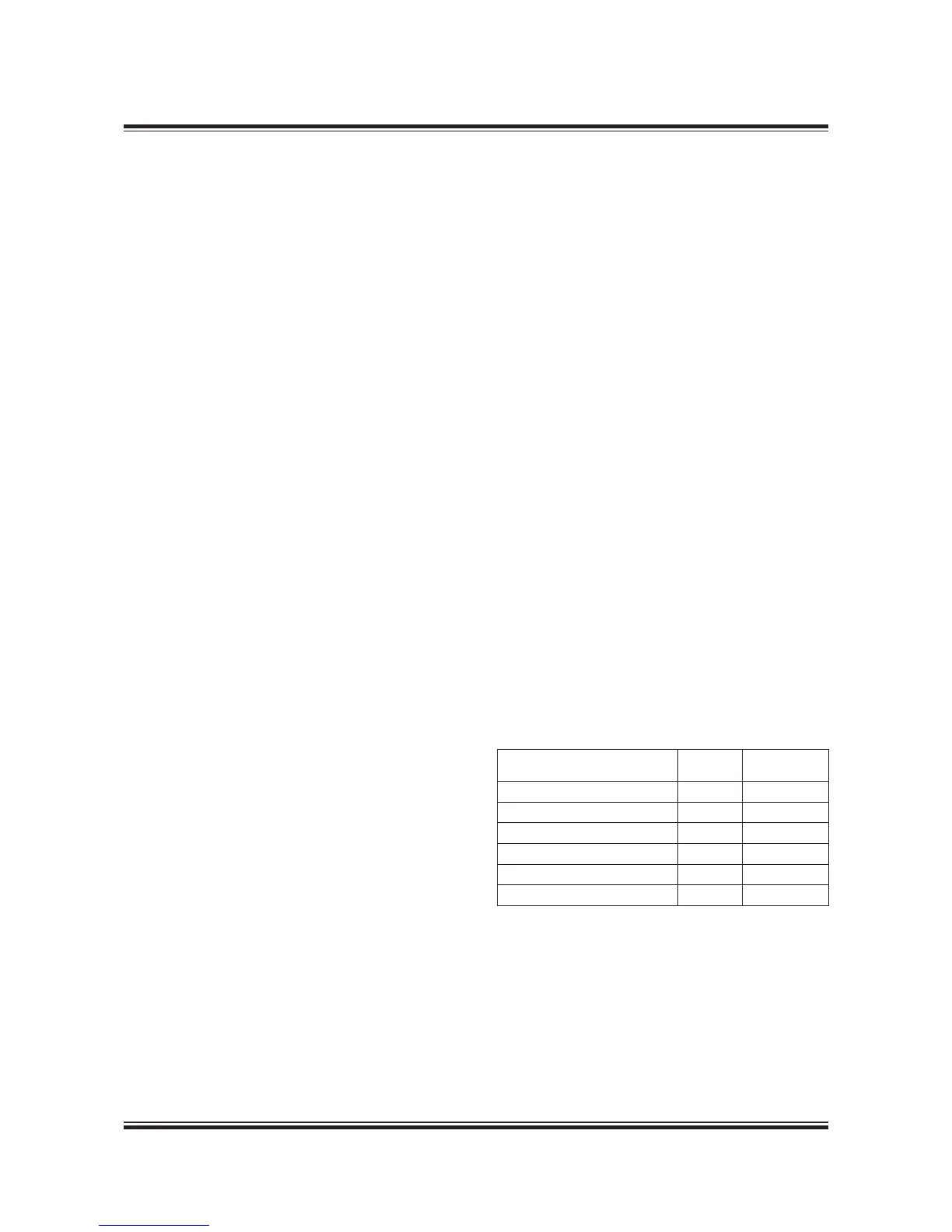MAN B&W 6.04
Page 2 of 12
MAN Diesel
MAN B&W S46MC-C7/8, S46ME-B8, S42MC7,
S40MC-C9, S40ME-B9, S35MC-C9, S35ME-B9,
S35MC7, L35MC6
198 61 90-6.2
The derated cooler capacities may then be found
by means of following equations:
Q
air, M
= Q
air, L1
x (Q
air%
/ 100)
Q
jw, M
= Q
jw, L1
x (Q
jw%
/ 100)
Q
lub, M
= Q
lub, L1
x (Q
lub%
/ 100)
and for a central cooling water system the central
cooler heat dissipation is:
Q
cent,M
= Q
air,M
+ Q
jw,M
+ Q
lub,M
Pump capacities
The pump capacities given in the ‘List of Capaci-
ties’ refer to engines rated at nominal MCR (L
1
).
For lower rated engines, only a marginal saving in
the pump capacities is obtainable.
To ensure proper lubrication, the lubricating oil
pump must remain unchanged.
Also, the fuel oil circulating and supply pumps
should remain unchanged.
In order to ensure reliable starting, the starting air
compressors and the starting air receivers must
also remain unchanged.
The jacket cooling water pump capacity is rela-
tively low. Practically no saving is possible, and it
is therefore unchanged.
Seawater cooling system
The derated seawater pump capacity is equal to
the sum of the below found derated seawater flow
capacities through the scavenge air and lube oil
coolers, as these are connected in parallel.
The seawater flow capacity for each of the scav-
enge air, lube oil and jacket water coolers can
be reduced proportionally to the reduced heat
dissipations found in Figs. 6.04.01, 6.04.02 and
6.04.03, respectively i.e. as follows:
V
sw,air,M
= V
sw,air,L1
x (Q
air%
/ 100)
V
sw,lub,M
= V
sw,lub.L1
x Q
lub%
/ 100)
V
sw,jw,M
= V
sw,lub,M
However, regarding the scavenge air cooler(s),
the engine maker has to approve this reduction in
order to avoid too low a water velocity in the scav-
enge air cooler pipes.
As the jacket water cooler is connected in series
with the lube oil cooler, the seawater flow capac-
ity for the latter is used also for the jacket water
cooler.
Central cooling water system
If a central cooler is used, the above still applies,
but the central cooling water capacities are used
instead of the above seawater capacities. The
seawater flow capacity for the central cooler can
be reduced in proportion to the reduction of the
total cooler heat dissipation, i.e. as follows:
V
cw,air,M
= V
cw,air,L1
x (Q
air%
/ 100)
V
cw,lub,M
= V
cw,lub,L1
x (Q
lub%
/ 100)
V
cw,jw,M
= V
cw,lub,M
V
cw,cent,M
= V
cw,air,M
+ V
cw,lub,M
V
sw,cent,M
= V
sw,cent,L1
x Q
cent,M
/ Q
cent,L1
Pump pressures
Irrespective of the capacities selected as per the
above guidelines, the belowmentioned pump
heads at the mentioned maximum working tem-
peratures for each system shall be kept:
Pump
head bar
Max. working
temp. ºC
Fuel oil supply pump 4 100
Fuel oil circulating pump 6 150
Lubricating oil pump 4.0 70
Seawater pump 2.5 50
Central cooling water pump 2.5 80
Jacket water pump 3.0 100
Flow velocities
For external pipe connections, we prescribe the
following maximum velocities:
Marine diesel oil ......................................... 1.0 m/s
Heavy fuel oil .............................................. 0.6 m/s
Lubricating oil ............................................. 1.8 m/s
Cooling water ............................................. 3.0 m/s
